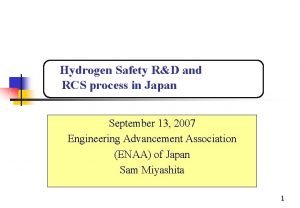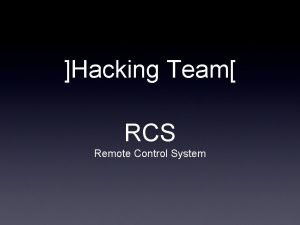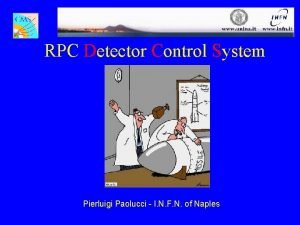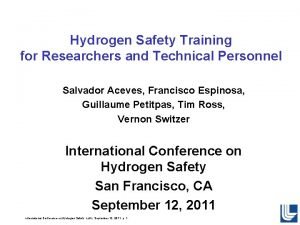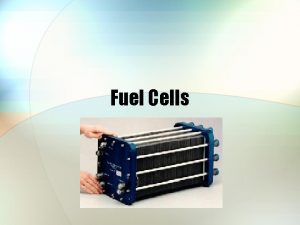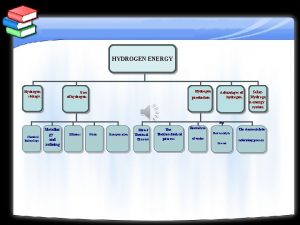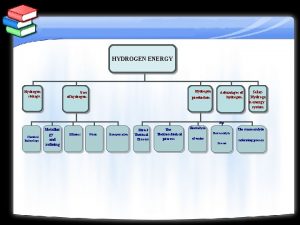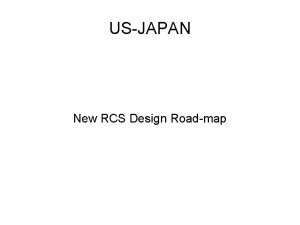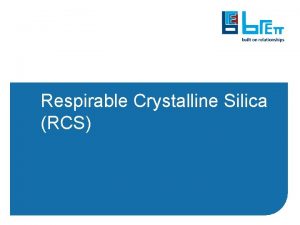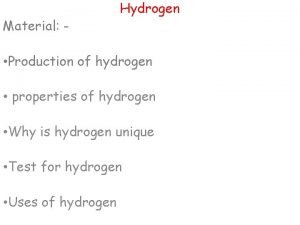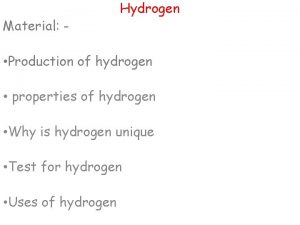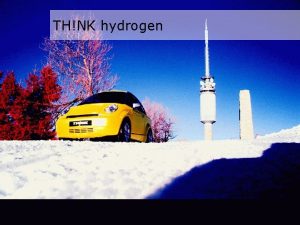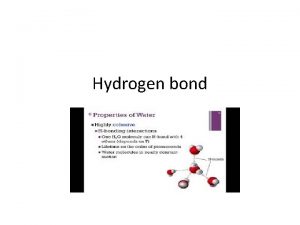Hydrogen Safety RD and RCS process in Japan











- Slides: 11

Hydrogen Safety R&D and RCS process in Japan September 13, 2007 Engineering Advancement Association (ENAA) of Japan Sam Miyashita 1

NEDO Project Promotion Scheme R&D Hydrogen & Fuel cell Community Demonstration RC&S • JHFC Project (FCV & Hydrogen Station) / METI Projects • Demonstration of Residential PEFC System for Market Creation • Demonstration of SOFC Systems Collect safety data about review of regulation Development of test method • ISO TC 22/SC 21 Electrically propelled road vehicles • ISO TC 197 Hydrogen technologies • IEC TC 105 Fuel cell technologies NEDO promotes 1) development, 2)demonstration and 3) updating of codes and standards. 2

Deregulation for Technical Barrier Conformity of Regulation 【JAPAN】 LAW JIS IDT or MOD ~ ~ ISO / IEC IDT or MOD Country Standard LAW (Compulsory) 【Other Countries】 IDT: Identical, 【Japan】 n Road & Transportation Law n High Pressure Gas Control Law n Electricity Safety Law n Construction Standard Law 【International】 n UNECE WP 29 n Orange Book. ICAO Dangerous Cargo Transportation Rule UNECE WP 29:UN/EC Economic Committee Vehicle Standard Orange Book:UN Recommendations on the TRANSPORT OF DANGEROUS GOODS Model Regulations ICAO:International Civil Aviation Organization MOD: Modified 7

4

5

Hydrogen and Fuel Cell Vehicle Safety Evaluation Facility Hy-SEF Explosion Resistant Fire Test Cell Hydraulic Pressure Test Area Liquid Hydrogen Test Area Exhaust After Treatment High Pressure Hydrogen Gas Test Area Located in Ibaraki Prefecture 100 km Northeast of Tokyo, Established in 2004 6

Facility Explosion resistant fire test cell Silencer -80 d. B Exhaust 750 m 3/min. Air Inner size: 18 m diameter, 16 m height Wall: Reinforced concrete, 1. 2 m thickness Iron surface Structure to stand the explosion of 260 L volume and 70 MPa(10, 000 psi) hydrogen cylinder 7

Utilization of fire test cell Facility 1. Flame exposure test of high density hydrogen storage High pressure cylinder, Liquefied hydrogen, Metal hydride, Carbon nano-tube, Chemical hydride 2. Vehicle fire test Property of released hydrogen flame Safety release method of hydrogen 3. Study of hydrogen diffusion Diffusion, Ignition, Flame propagation Measures to prevent accidents. 4. Manuals for vehicle fire accident Fire fighting, Rescue, Safety distance 8

Exhaust after treatment Facility Silencer(-80 d. B) Explosion Resistant Fire Test Cell Intake Blower(750 m 3/min. ) Exhaust After Treatment Ceramic Filter Chemical Adsorbent Exhaust Blower(750 m 3/min. ) 9

Facility High pressure hydrogen filling test equipments High pressure hydrogen compressor 110 MPa, 200 Nm 3/h High pressure hydrogen storage tank bank 110 MPa, 72. 5 litters x 9 Gas-tight temperature control chamber -40 o. C to 85 o. C Gas-tight temperature control chamber in a gas 10 pit

Conclusion (What to do for Hydrogen Safety R&D and RCS) AA) To promote the development of R&D for Hydrogen Safety. BB) To promote the demonstration of Hydrogen Safety CC) To update the regulation, code & standard stemming from the results of R&D and demonstration of Hydrogen Safety Thank you for your attention. 11
